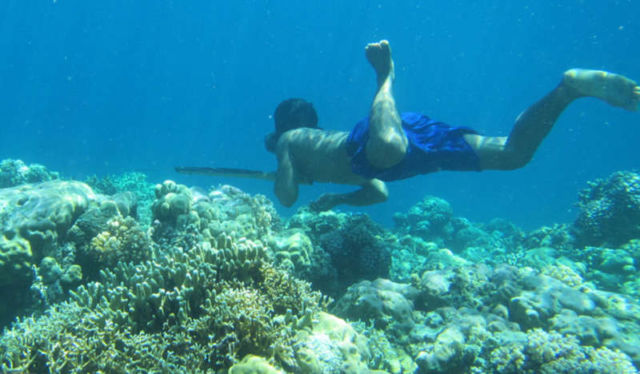The evolution of ‘Indonesian fish people.’ They can dive 230ft and hold their breath for 13 minutes.
Competitive breath-hold divers have only two options to increase their time underwater – through training, they can try to boost their lung capacity or increase their red blood cell count.
Over hundreds if not thousands of years, however, a group of Southeast Asian “sea nomads” known for their deep-diving prowess has evolved a better solution: larger spleens.
In the video, Melissa Ilardo explains how the Bajau people adapted to long periods underwater by developing enlarged spleens. Melissa Ilardo images and editing, Linus Mørk filming.
The spleen holds oxygenated red blood cells, so presumably an enlarged spleen – those of the sea nomads, or Bajau people, are about 50 percent larger than the spleens of unrelated, non-diving neighboring groups – injects more blood cells into the circulation and makes more oxygen available for basic body functions during prolonged dives.
The physical and genetic changes that have enabled the Bajau to dive longer and deeper is yet another example of the immense variety of human adaption to extreme environments, in this case, environments with low levels of oxygen, said Rasmus Nielsen, a professor of integrative biology at the University of California, Berkeley. These examples can be key to understanding human physiology and human genetics.
source Berkeley.edu






Leave A Comment